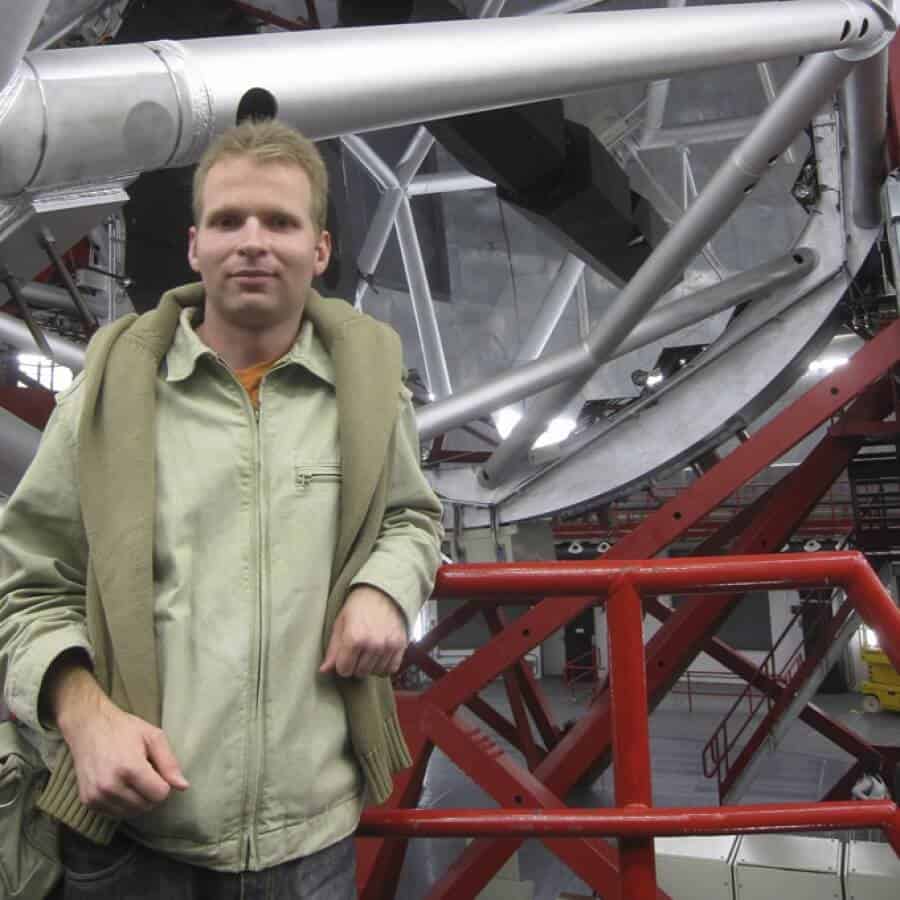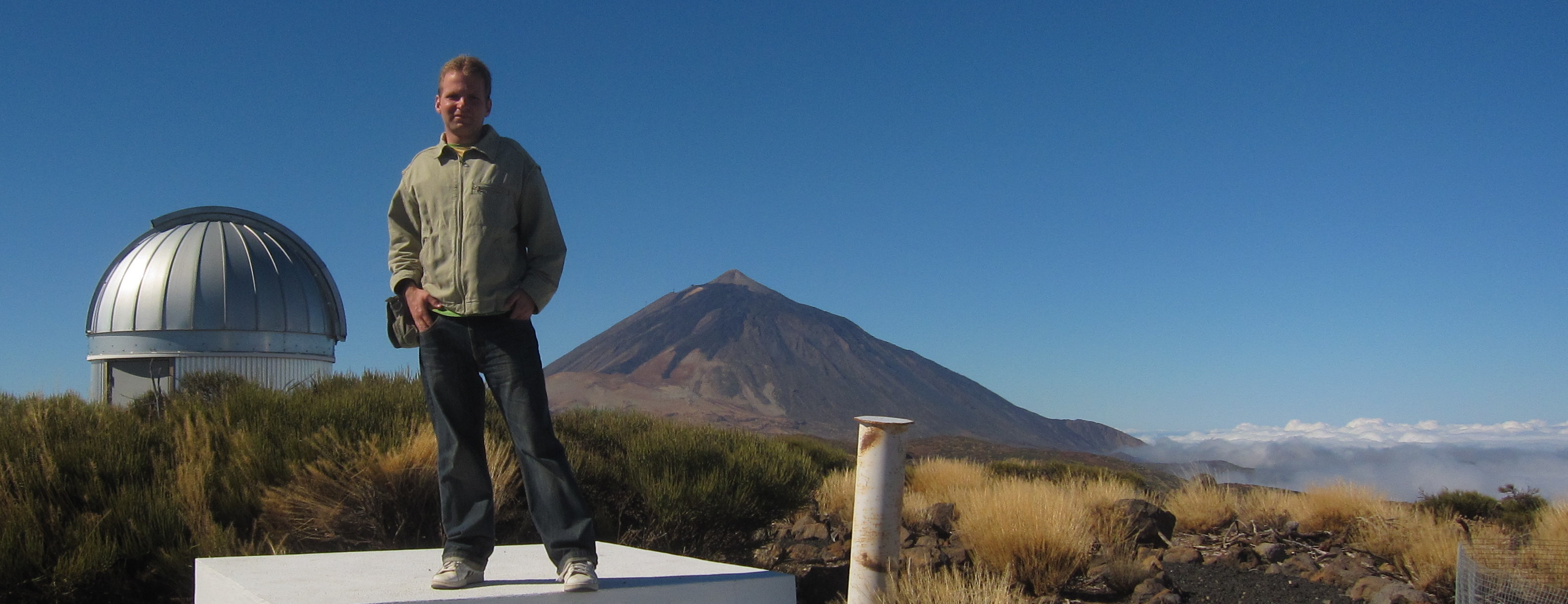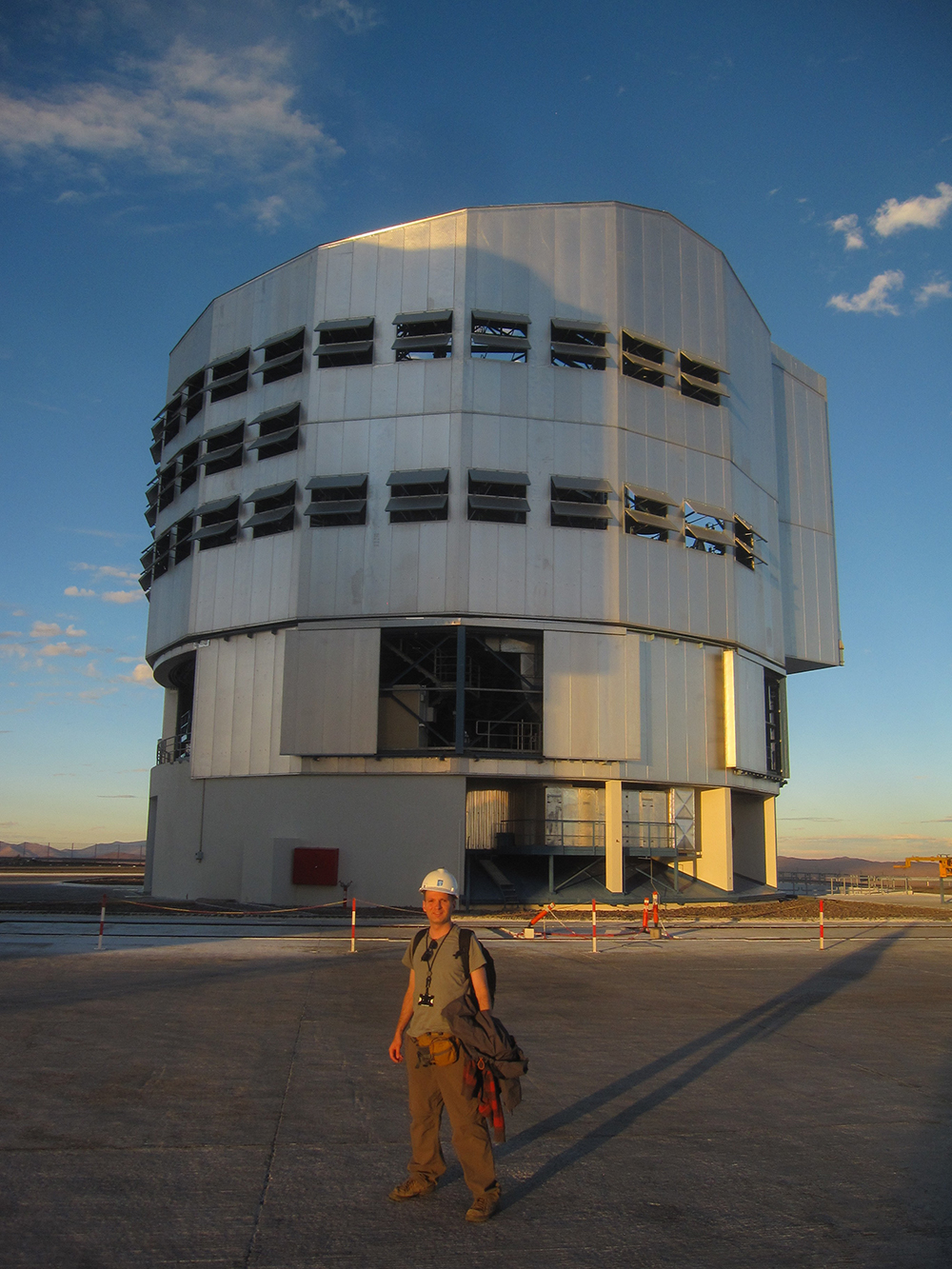From the time he was a kid, Dr. Marko Stalevski was drawn to the unknown and outer space. His interest led to an education in astrophysics, which took him to research and a PhD degree at the age of 30. Now, his office is in the Atacama Desert, and his projects look like scenes from Star Wars. One of the youngest EU experts for black holes tells his story, pointing out that knowledge, persistence, and hard work are the only way to great discoveries.
Astrophysics is a very specific branch of science. What brought you to this profession?
Many of my colleagues have a story about how they got hooked – a book they read, a movie they saw, or the first time they looked through a telescope. That’s not the case with me. As far as I can remember, I was simply always drawn to the unknown and the unexplained and was curious to know how the world around us works. So, astrophysics with endless space and all it’s mysteries was somehow inevitable.
What is crucial to performing promising research in the field you are working in, above all black holes? Is it the team of experts, a technique that you use, the situation you are working in, or something else?
Well, there is no unique answer to this question. Of course, for new breakthroughs even more sophisticated detectors and bigger telescopes are necessary. The expenses to design and build such instruments are very high, and these days, more often than not, many countries collaborate in these efforts. This implies very big teams of experts working together. On the other hand, theoretical work requires much less investment, and even scientists working alone or in small groups can achieve important results.
Apart from Chile, you have worked in many other places all around the world. Where did you gain the greatest chance for improvement and learning?
Apart from Chile, I did part of my PhD at Ghent University, in Belgium, and more recently spent a couple of months at Kyoto University in Japan. In our line of work, networking and mobility are very important, and each of these periods was invaluable for me. I still work very closely with the group from Ghent and the colleagues I met in Kyoto. Chile is currently one of the best places in the world for astrophysics. The Atacama desert in the north of the country is one of the driest places in the world, meaning it is a perfect spot for telescopes. Some of the world’s most advanced instruments are placed there, with many more to come. This makes Chile a very attractive destination for astronomers and a great place to meet potential collaborators, even to the point that I am struggling to keep up with the different projects I am involved in.
What does your typical work day look like?
Like many people these days, most of the time I am at the computer. Normally I start the day by going through the list of new research papers published each day, to stay up to date with the latest developments. The rest of the day I devote to one or two project that I am currently working on. This can mean writing or debugging a code, preparing or running a simulation, analyzing the results, or thinking how to crack a particular problem we are currently facing. When the results of the project become solid, I start preparing a paper and then for a few weeks a good part of my day I would be writing. Apart from this, once or twice per week I have a meeting with some of my colleagues, either in person or via teleconferencing, to solve a problem or brainstorm about new ideas.
What is the main difference between students of astrophysics in Serbia and abroad? What would you change in the Serbian education system?
In general, students in Serbia get a very good theoretical education, but very little chance for practical work and gaining experience. In many places I have visited it is quite common for students to publish their first papers in major astronomical journals during their master’s studies. This puts them at an advantage when applying for a PhD program at prestigious institutes abroad, compared to Serbia’s students. But I think this has been improving in recent years.
You are doing research related to black holes, and for most of us that sounds like science fiction. How quickly or slowly is science advancing in this specific field?
Indeed, for a long time black holes belonged to science fiction, and even in the scientific community they were considered to be no more than a theoretical curiosity. But in the late ’60s and ’70s of the 20th century they entered mainstream astrophysics, and people started to accept that such objects could actually exist in space. Today, even the general public is familiar with these peculiar objects and all the weird phenomena around them. Even though some phenomena, such as the warping of space and time, are hard to accept intuitively, we think we have a good understanding of them. What is still a great mystery is the very center of the black hole, the so-called singularity. Singularity is a mathematical concept, which is another way to say that our current theories can’t give us an answer. For this to happen, we need a new theoretical insight, a theory of quantum gravity, which is still beyond our grasp.
Recently, you and your team made a great discovery related to the dust around the black holes. Could you share some details with us?
We just published our latest research about gas and dust swirling around the supermassive black holes. These black holes are millions of times more massive than our Sun, and they are found in the centers of all galaxies, including our own Milky Way. Our team performed complex calculations on super-computers to simulate how the light interacts with the dusty clouds. We found that neglecting some effects may lead to wrong estimates of how much dust there is around these objects. We expect our results will help us to better understand the different stages of the black holes’ life and how they affect the material around them.
What would be your message to Serbian students of astrophysics?
First I would have some advice for those who have yet to decide if they want to enroll in an astronomy program: do it only if you can’t resist it. It can be a very rewarding and fulfilling path, but at the same time a very uncertain and unpredictable one. For those currently studying, I would recommend trying toget one of the scholarships or other means of funding to spend a semester or do an internship abroad. That would allow them to get a better idea of what professional astronomy is like and if they want to continue pursuing this career after graduating.
Where do you see astrophysics in 20 years, and can you assume how far the science will reach regarding knowledge about black holes?
We will not have to wait for 20 years – as we speak, a new instrument called GRAVITY is being tested with the Very Large Telescope Interferometer at Cerro Paranal in Chile. Once it is fully operational, this instrument will allow us to take a peek at the ‘event horizon’, the immediate surroundings of the supermassive black hole in the center our own Milky Way Galaxy. We expect to see the so-called black hole ‘shadow’ and to be able to track the motion of the object around it with an unprecedented precision. This will be another test of Einstein’s theory of General Relativity, and will help us narrow down the different possibilities of exactly how gravity works. Of course, over a 20 year period, new questions will arise; maybe even GRAVITY will give us a few surprises…
Support us!
All your donations will be used to pay the magazine’s journalists and to support the ongoing costs of maintaining the site.
Share this post
Interested in co-operating with us?
We are open to co-operation from writers and businesses alike. You can reach us on our email at [email protected]/[email protected] and we will get back to you as quick as we can.












